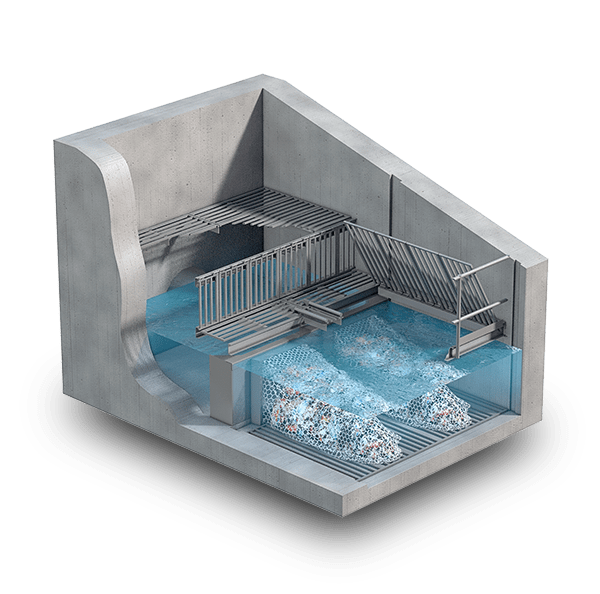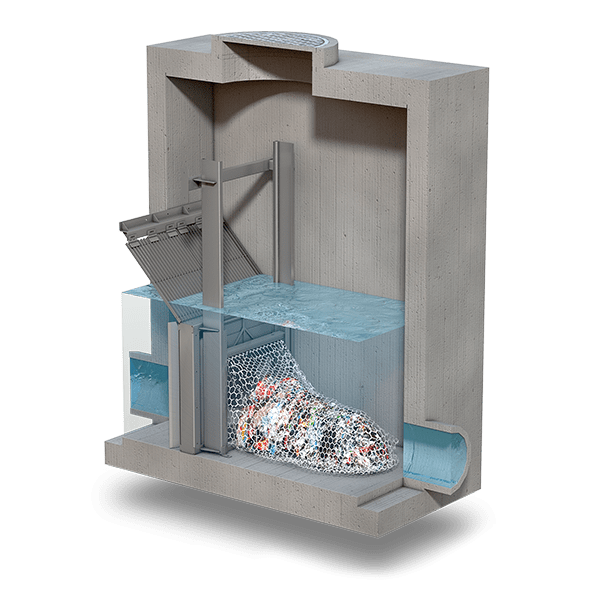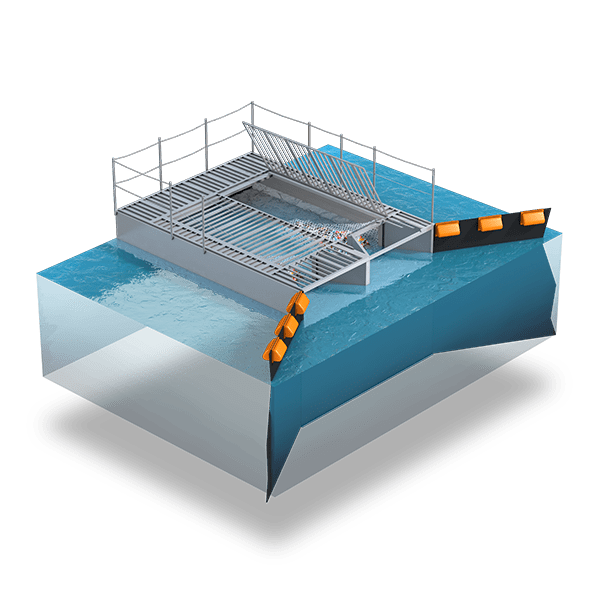TrashTrap
Capture Floatables With Innovative Netting Systems
Trash Removal Solutions for Stormwater, Urban Runoff and Combined Sewer Overflow (CSO) Discharges
Trash Removal Solutions for Stormwater, Urban Runoff and Combined Sewer Overflow (CSO) Discharges

TrashTrap netting systems combine the natural energy of water flow with disposable mesh nets to capture and easily remove trash, floatables and solids from stormwater and wastewater. The systems can be adapted to a variety of applications; several net size combinations are available.

The in-line module is completely hidden from view, installed underground and upstream of the outfall. Components are installed in a high-strength precast concrete chamber, and servicing is easy due to ground-level access. In-line modules are installed in very tight locations and easily retrofit into almost any stormwater system.

End-of-pipe modules are utilized where the end of the collection system enters the water course. They easily retrofit to existing outfall structures, and the robust design can handle very large storm events.

Floating modules perform in the same manner as end-of-pipe systems, but they float on the water. The pontoon structure floats constantly at water level, and funnel and side curtains direct trash into nylon nets. Floating modules can accommodate high storm events, and the prefabricated structure makes for fast installation.